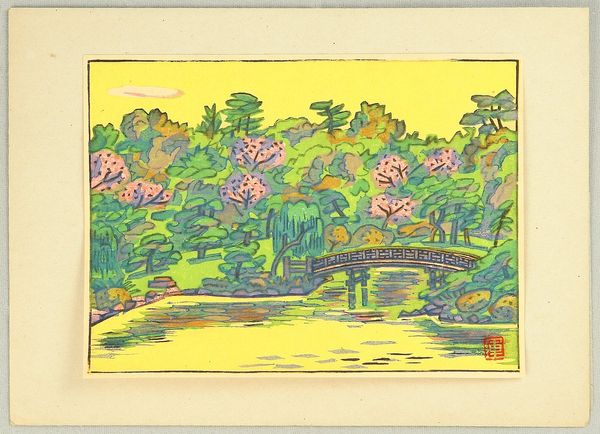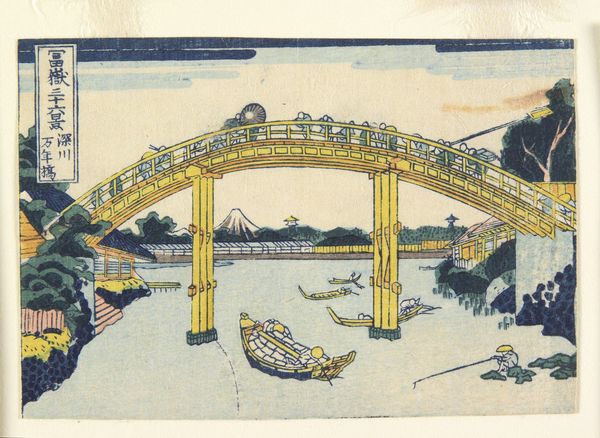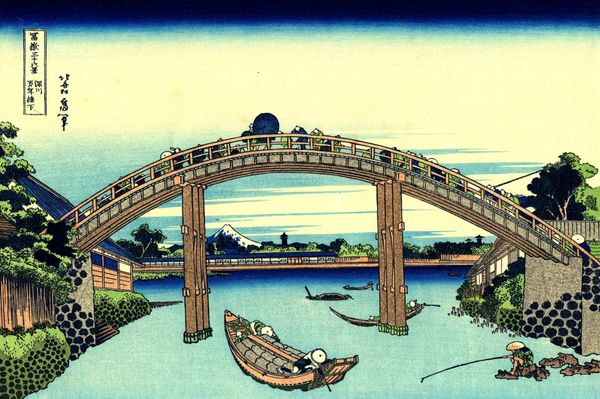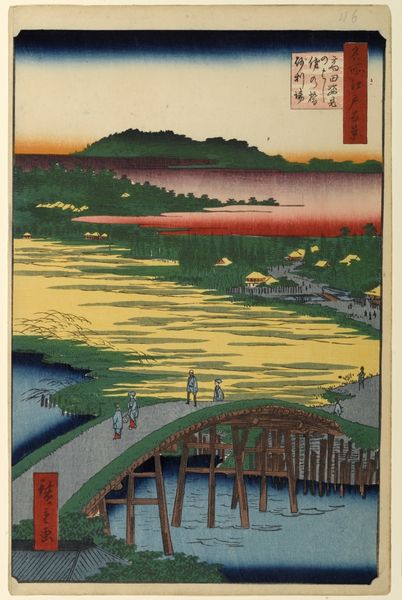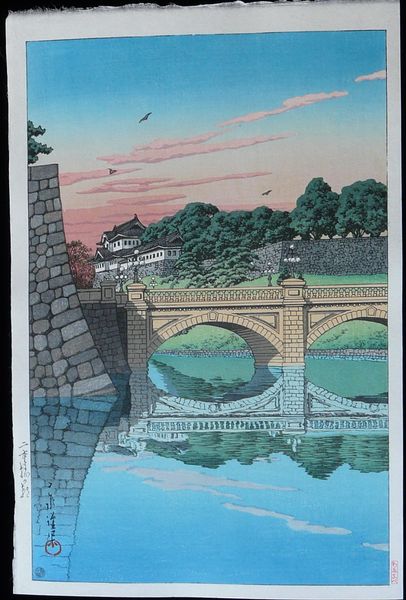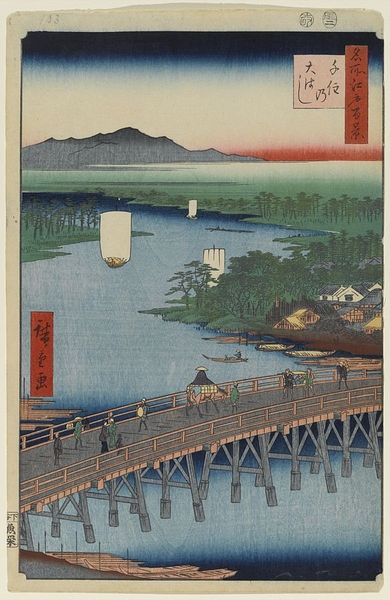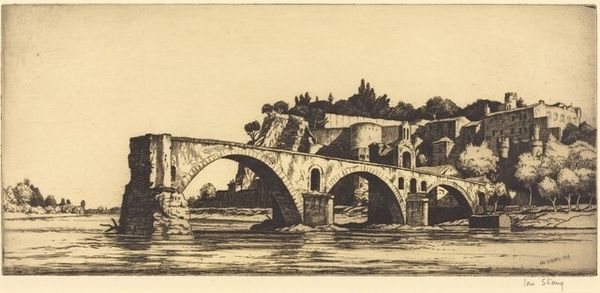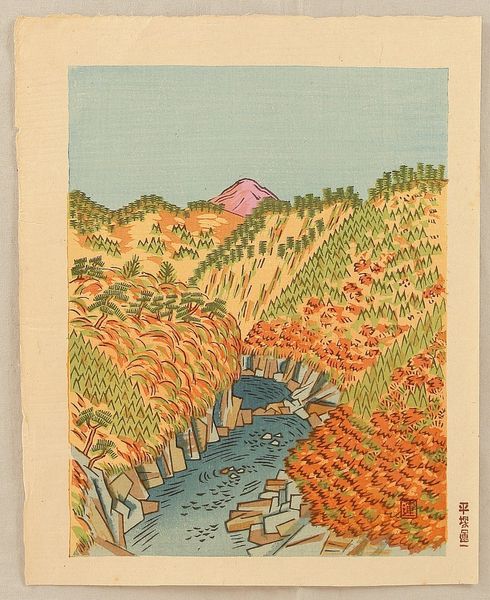
Copyright: Unichi Hiratsuka,Fair Use
Curator: This woodblock print, titled "Isahaya Spectacles Bridge," was created in 1940 by Unichi Hiratsuka. It offers a unique take on the traditional Ukiyo-e landscape, doesn't it? Editor: It does indeed. It gives off a dreamy, almost nostalgic vibe. I'm drawn to the simplified geometric forms and those soft pastel hues that lend it an almost serene quality, but there's also a loneliness to the scene... like a postcard sent from a memory. Curator: That tranquility might stem from its creation period. Hiratsuka was a key figure in the Sosaku-hanga movement, emphasizing the artist's self-expression over rigid tradition. Look closely and notice the flat areas of color and strong lines— hallmarks diverging from the earlier commercial success and workshop production methods typical in Ukiyo-e. Editor: True, I get the feeling the artist put it out himself. The color isn't overworked, if you know what I mean. Did you notice, that light blue and pale yellow, how they set the stage, the quiet bridge is a sturdy figure—almost a landmark? There are people still using bridges, so it reminds me of movement despite how quiet and peaceful this is. It suggests permanence across generations. Curator: Bridges, especially stone bridges, often function as public monuments in the modern period. I agree that that geometric arrangement contributes heavily, as if a simple reminder to get over oneself. As such, It symbolizes connection, both physically connecting people to each other, of course, but in an ideological context of how these connections can support modernization projects under imperial ambitions. Editor: So you see a touch of government propaganda here too? But to me it whispers of resilience and endurance. All that and also about hope and the chance for progress, whether forced or otherwise. Maybe this art is all the more poignant because those old landscapes feel distant, like something fading into history but this rendition keeps things in tow, too? Curator: It encapsulates complex historical dynamics and changing artistic attitudes just as you say. By combining Ukiyo-e conventions with Sosaku-hanga ideals, it becomes both a celebration of landscape and also the artist’s own subjectivity in this time period. Editor: Beautifully said. Art isn’t ever made in a vacuum. That in itself has so much connection for something seemingly so solitary.
Comments
No comments
Be the first to comment and join the conversation on the ultimate creative platform.
